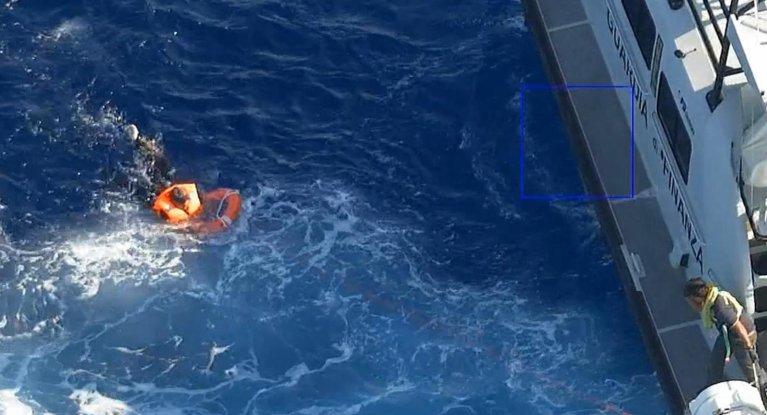At least 26 people have died after a migrant boat capsized off the coast of Lampedusa, a small Italian island and frequent landing point for those crossing the Mediterranean. The tragedy, reported by Reuters, underscores the ongoing dangers faced by migrants attempting the perilous sea journey to Europe. Italian authorities are conducting search and rescue operations as they work to recover survivors and determine the full scale of the disaster.
Migrant Tragedy Strikes Off Lampedusa Island Highlighting Risks of Mediterranean Crossings
The Mediterranean tragedy unfolded when a migrant vessel capsized near Italy’s Lampedusa Island, resulting in the deaths of at least 26 people, according to official sources. Rescue teams worked throughout the night to recover survivors and bodies from the sea, underscoring the dangerous conditions faced by those attempting to cross this perilous stretch. The incident highlights the ongoing crisis of irregular migration and the desperate measures many take to reach European shores. Authorities have reiterated calls for enhanced cooperation among EU states to manage both rescue operations and migration flows more effectively.
Key factors contributing to the disaster include overcrowded boats, unpredictable weather, and exploitative smuggling networks. Efforts to improve maritime patrols and search-and-rescue capabilities continue, but the risks remain high. The victims ranged widely in age and nationality, reflecting the diverse backgrounds of migrants risking everything for a chance at safety and opportunity. Below is a summary of critical data related to recent Mediterranean crossings:
| Category | Statistic |
|---|---|
| Total Rescued This Week | Over 1,500 |
| Reported Shipwrecks | 3 |
| Known Fatalities | 36 |
| Origin Countries |
|
Investigations Underway as Authorities Probe Causes of Deadly Shipwreck
Authorities have launched a comprehensive investigation into one of the deadliest migrant shipwrecks off the coast of Lampedusa, Italy. Preliminary reports suggest that overcrowding and rough sea conditions might have played a critical role. Search and rescue operations continue, but the tragedy has already claimed at least 26 lives, with dozens more feared missing. Officials are meticulously examining the vessel’s route, its seaworthiness, and potential human trafficking connections to piece together the events leading to the disaster.
Key aspects under investigation include:
- The exact number of passengers onboard and their nationalities
- Communication records between the migrant vessel and maritime authorities
- Weather conditions and how they impacted the ship’s navigation
- Possible involvement of smuggling networks in organizing the perilous journey
| Aspect | Status | Next Steps |
|---|---|---|
| Passenger Manifest | Incomplete | Cross-check refugee databases |
| Vessel Condition | Under Inspection | Forensic assessment by marine experts |
| Smuggling Links | Allegations Reported | Interrogation of detainees and suspects |
| Weather Reports | Analyzed | Correlate with survivor testimonies |
Calls for Enhanced Maritime Rescue Operations and Stricter Immigration Policies Intensify
The tragic loss of at least 26 lives in the latest shipwreck near Lampedusa has stirred urgent debates across Europe regarding the safety and efficacy of current maritime rescue missions. Authorities and humanitarian organizations are increasingly vocal, pushing for enhanced coordination among Mediterranean countries and the deployment of advanced resources such as improved surveillance drones, faster rescue vessels, and real-time communication networks. These efforts aim to reduce response times and prevent future catastrophes during perilous sea crossings.
Simultaneously, political leaders are under mounting pressure to tighten immigration controls in an attempt to curb risky sea journeys and illegal entries. This has sparked contentious discussions around implementing:
- Stricter asylum processing protocols at entry points
- Enhanced border security patrols
- Strengthened international partnerships to tackle human trafficking networks
Balancing humanitarian obligations with security concerns remains a challenge, underscoring the complexity of managing migration flows in the Mediterranean.
| Proposed Measures | Expected Impact |
|---|---|
| Advanced Rescue Technology | Faster, safer maritime response |
| Border Security Enhancement | Reduced illegal crossings |
| International Collaboration | Joint intelligence sharing |
| Strict Asylum Guidelines | Streamlined processing times |
Final Thoughts
The tragic shipwreck off Italy’s Lampedusa island underscores the ongoing perils faced by migrants attempting to cross the Mediterranean in search of safety and a better life. As investigations continue, authorities and humanitarian organizations are calling for increased efforts to prevent such disasters and to address the root causes driving migration. The loss of at least 26 lives serves as a grim reminder of the urgent need for coordinated international action to protect vulnerable migrants and enhance maritime safety in the region.




